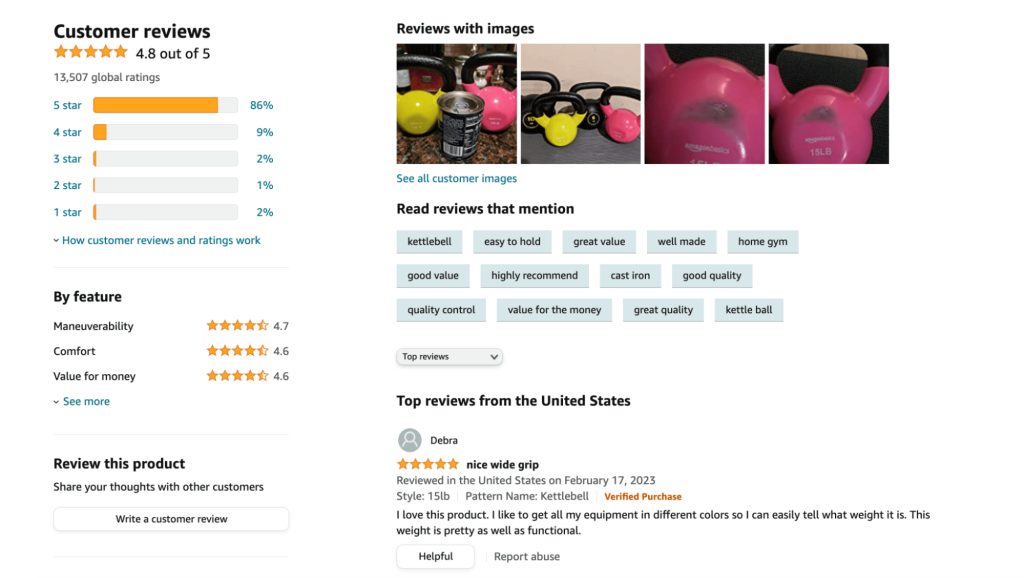Product returns are one of the biggest headaches you’ll face as an online retailer. Reducing your overall number of returns is essential for every online retailer. Not only will it help your revenue numbers, but it’ll also make it easier and less time-consuming to run your business. But how exactly do you reduce returns?
Without a brick-and-mortar presence, returns add more difficulty when buyers have to ship something back to you. An overly restrictive return policy isn’t a good solution, as it hurts your relationship with otherwise great customers and can result in bad reviews.
Just like all problems in life, the best way to deal with them is to find out what’s causing the problem and cut it off at the source. First, we’ll look at some of the most common causes of returns and then discuss how you can prevent them.
Why customers return
1. Customers ordered the wrong size
Sometimes brands have different sizing measurements. For example, a large in your brand may compare to a medium in another, confusing customers. Or the buyer couldn’t accurately judge the size of a piece of furniture, and upon arrival, it doesn’t fit the space. These incidents happen all the time and were, in fact, the most cited reason for online returns in a 2022 report by Narvar.
2. The product doesn’t match the description
When you buy something in-store, you can pick it up, feel it, see it, smell it (if you’re into that). Online buying doesn’t offer that same experience which therefore leaves room for ambiguity. No one wants to receive an online purchase and discover that their purchase fails to match their expectations. As a result, they return it.
3. Gift purchases gone wrong
Birthdays, holidays, or ‘just because’ gestures are common reasons for purchasing gifts. When a buyer purchases for someone else, a whole new layer of difficulty comes into play for buying the right thing. Sometimes a gifter will miss the mark and get something the receiver doesn’t like. This results in returns.
4. Intentionally ordering multiple items with the intention of returning some
This one is especially a problem for retail. The customer wants to try it on and see what works. The root cause is online buyers’ unreliable information about sizing and appearance. No one wants to make a purchase, realize it doesn’t fit or isn’t the right color, and then be stuck without options.
5. Received damaged goods
Another prevalent yet unfortunate reason for returns is because of damaged goods. If you’re an honest retailer, you’ll never intentionally send a customer defective merchandise. It’s usually during shipping that the product likely gets mishandled and damaged. In any case, your customer will be displeased and choose to return it.
How to reduce returns
You’ll never eliminate returns. It’s all part and parcel of running a business, whether online or brick-and-mortar. But that doesn’t mean you can’t put a big dent in the number of returns you must process.
1. Show them the goods
Product images are one of the most important elements of selling a physical product online. Low-quality images will not only limit the number of sales you make, but they’ll also land you more returns. You want buyers to really understand what they’re getting before it gets to their door.
Images should be: High-resolution, well-lit, zoomable, clean, and distraction-free.
But you can go further with images. Show your products off in ways that let them come alive.
- Clothing should be worn by actual people whenever possible. If you want to win shoppers over, show your apparel on different-sized models so shoppers of all shapes and sizes know what they are getting into.
- Furniture, electronics, appliances and anything else that becomes a fixture of a space should be shown in that space. Show shoppers relative sizes. Measurements and plain product photos are great, but showing off your stuff in its natural environment allows for better decision making.
- Take a step back and think about your product page like a buyer. Are there things you want to see? Do you want a better idea of size, fit, or scale? Answer those questions with pictures.
2. Let buyers sing your praises
Your buyers know what they care about more than you do. They know what problems they have, what they love, what they hate. Leverage and display reviews from those buyers. Reviews carry a lot of weight.

Most returns happen when shoppers don’t get the information they need in a digestible format, or when they lack trust in that information. By featuring reviews prominently and asking them to include information about things like fit, you can help buyers make better decisions.
3. Help them make better decisions
Give buyers accurate information in a way that’s useful to them and that answers any questions they might have. A lot of stores are missing at least one of those elements when it comes to product info.
Maybe you present information well, but it’s not complete enough. Maybe you’ve got enough sizing information, but your sizing chart looks like a calculator exploded on a spreadsheet. You can fix this with a little work, and you’ll be much better off for it. Here’s what you should do…
A) Find out what they need to know
Collect the data you’ve got available.
- Reasons given for returns.
- Questions and problems from customer service interactions.
- Anything that gets mentioned in reviews.
- Questions/comments/issues that come up in social media or anywhere else your stuff gets discussed.
B) Upgrade your product information
All this tells you what your buyers consider important and why you get returns. The next step is to create the assets and give them the information they need.
- Fit is one of the hardest things to get right, and one of the most important as well. Give shoppers a better way to judge size than numbers on a spreadsheet.
- Write better product descriptions. The more relevant and well-formatted information you can give your customers, the better.
- If your products need assembly or specific care, create a guide and include a link on your product page. This kind of transparency will make them feel better about buying and reduce the chance they’ll get frustrated. Frustration leads to bad reviews and returns.
4. Tell the whole truth and nothing but the truth
Don’t overhype things you sell. Be truthful about what people are paying for and what they’re worth. This is really more of an obvious problem in the dropshipping, get-rich-quick world. Serious ecommerce stores don’t scam their customers.

We know most online sellers are above such tricks and dishonesty to sell products, but sometimes we get excited about the things we sell. It’s better to check ourselves and ensure we can deliver on our marketing promises.
- Use accurate product information and material listings.
- Use pictures of the actual product, not just something that looks similar.
- Price for what your products are worth. Making more per sale is nice, but if it just gets returned, it did you no good.
- Don’t make promises that you can’t keep.
5. Help give better gifts
You can’t control what people give as gifts. But if someone has good enough taste to buy from, you may be able to help them make good gifting choices.
- Gift cards are always a good option. Pushing gift cards, especially around holidays, makes the post-holiday season easier and less overwhelming than dealing with returns.
- Offer a wishlist functionality. Let shoppers create public or private lists from which others can search and buy. This can also encourage account creation, which grows your email list.
- Offer gift bundles. This will give an easy, less likely-to-be-returned gift option and bump up your average order value.
6. Create and publish a solid return policy
Write and create a return and exchange policy that inspires confidence in your customers but discourages excessive returns. Getting into the details of what makes a good return policy would be another 2,000 words. Instead, here’s a fantastic guide on creating a returns policy that can increase sales.
Nearly every ecommerce business has to deal with a certain degree of returns at some point in its operations. But by knowing why customers return, they can implement the above five tactics to limit the return rate. Optimizing customer experience through accurate photos is one of the biggest ways to reduce returns. Edit your product photos with Pixc today!








